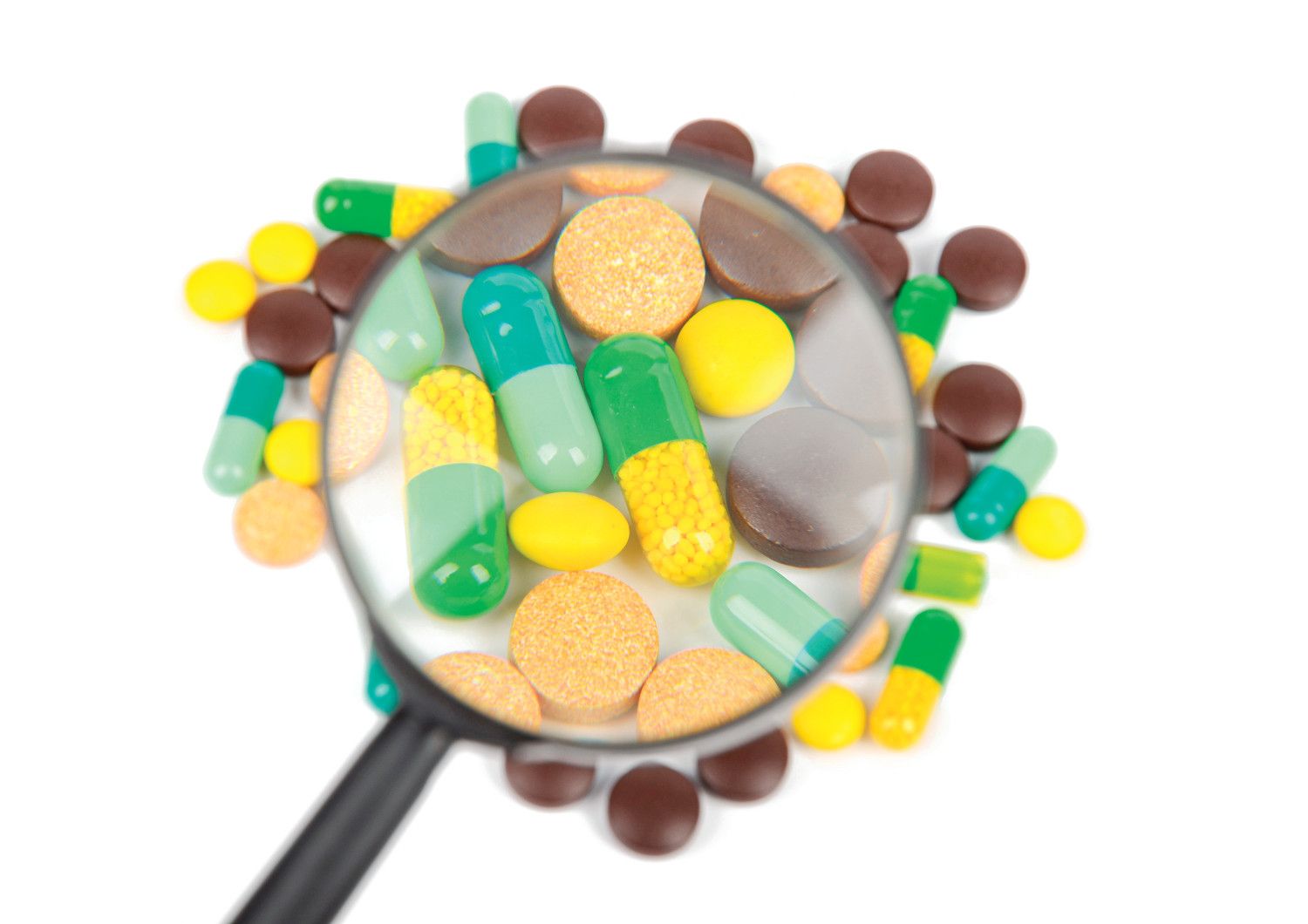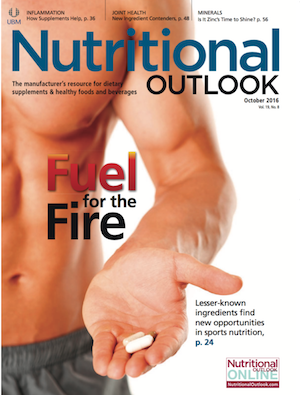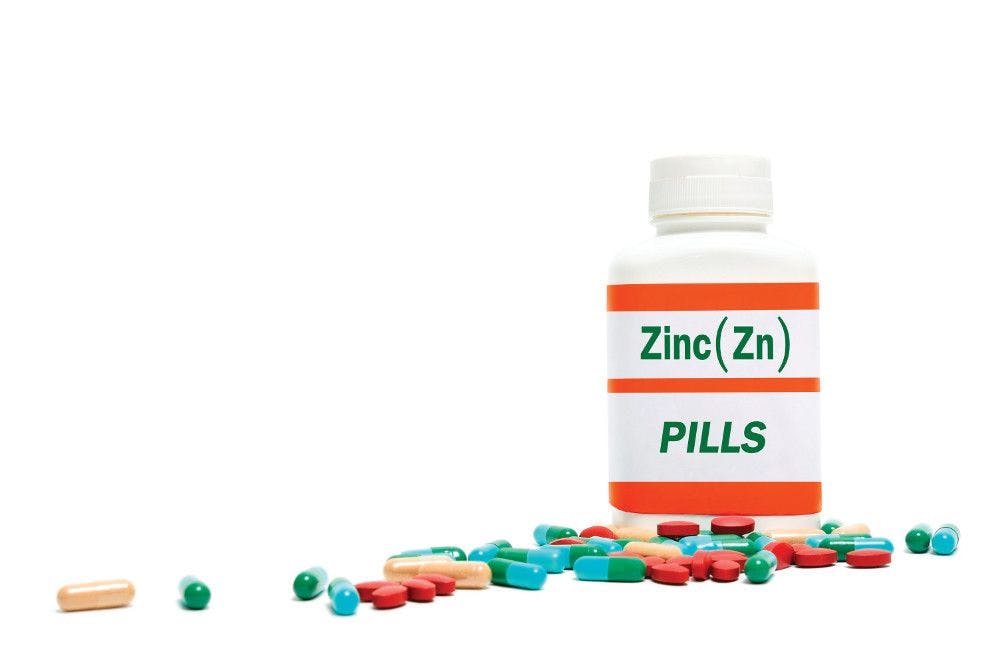Where Does the Dietary Supplements Industry Stand Two Years after the New York Attorney General’s Investigation?
Attorney General Schneiderman’s action “still raised important questions about supply-chain transparency and, in many cases, the authenticity of supplements sold in the market.”
Photo © Anaken2012/Shutterstock.com

No matter how you feel about Donald J. Trump, you can at least grant him this: He may have inadvertently distracted New York State Attorney General Eric T. Schneiderman from further lifting the curtain on how the supplement industry does its business. For as long as Schneiderman and his office are combing through financial records at the Trump Foundation or spearheading lawsuits against Trump University, they aren’t analyzing DNA test results from a market basket of supplements.
Of course, their diverted focus doesn’t consign the state’s investigation-opened after University of Guelph researchers found widespread contamination and substitution in herbal products-to ancient history. Nor does it undo the damage that Schneiderman inflicted in early 2015 when he very publicly directed four major retailers to stop selling some popular herbal supplements after DNA barcoding revealed not only the absence of plant materials listed on labels, but the presence of potential contaminants, to boot.
It does, however, suggest that the Empire State’s chief law-enforcement officer is frying other fish for the present. And it gives those in the supplement industry-not just retailers but suppliers, manufacturers, and marketers alike-a much-deserved time-out in which to take a breath, take stock of the investigation’s fallout, and take a good hard look at how they’ve been operating, and improving, since.
Faulty Premise
It would be hard to understate just how black an eye the “New York affair” gave the supplement world. As Elan Sudberg, CEO, Alkemist Labs (Costa Mesa, CA), says, “Between the media and the AG, the industry was dished a huge platter of scrutiny last year that changed how it’s viewed universally.” And despite the current lull, that attention hasn’t fully let up.
After all, says Steve Mister, president and CEO of the Council for Responsible Nutrition (CRN; Washington, DC), attorneys general are tenacious creatures, and “once they open an investigation, they want to pull out a win.” But to Schneiderman’s likely consternation, “There may not be a win here for him to have,” Mister surmises.
For that, thank the DNA barcoding, or fingerprinting, from which the attorney general extracted his evidence. As Anurag Pande, PhD, vice president, scientific affairs, Sabinsa (East Windsor, NJ), explains, “While DNA fingerprinting can definitely help in identifying the right species of raw material, this technique has limited application when applied to plant extracts”-like those implicated in the sting-“which may not contain any DNA.” He adds that the method has limitations not only when evaluating finished products, but also when identifying plant parts or the possibility of chemical and inorganic contaminants, as well.
Nevertheless, DNA barcoding was “thrust onto frontstage for show,” Sudberg supposes, because “General Schneiderman found the shiniest ball and made it a requirement when, actually, the technology is barely ready to serve our industry in any meaningful way, particularly when compared to better-established methods that we’ve been using for years.” He believes that companies quick to adopt DNA testing “have done so under misguided pressure or purely to appear ahead of the game to the media and industry.”
FDA itself issued a statement in response to an inquiry from Senators Orrin Hatch (R-UT) and Martin Heinrich (D-NM) noting that the agency neither uses nor requires DNA barcoding and would need to evaluate any methodology aimed at a specific product before determining whether the method was appropriate and scientifically valid for the product. “Even GMP regulations say that you must use at least one appropriate test to verify ingredient identify,” Mister adds, “but don’t say what that test is, because a test that’s appropriate for chondroitin may not be appropriate for ginkgo.”
Silver Linings
Yet such arguments may prove too little, too late, in the face of continued attention from states attorneys, the media, regulators, Congress, industry watchdogs and-oh yeah-consumers. Schneiderman’s investigation, Mister says, “emboldened all of them.”
But the upshot isn’t all downside. For despite using “a few bad apples to paint the whole industry as bad” and drawing its conclusions from a “questionable methodology,” Schneiderman’s action, Pande says, “still raised important questions about supply-chain transparency and, in many cases, the authenticity of supplements sold in the market.” And if there’s a silver lining to be mined from this experience, that’s where it lies.
Looking back with the benefit of hindsight, Mister believes the investigation “brought to the surface a concern that lots of people in the industry had, which is, ‘How are we guaranteeing the safety, purity, and identity of these products?’” And how can industry gird itself for the next time an attorney general comes knocking? “We need a better answer to show that we’re protecting our supply chains all the way back to the plant’s harvest so that we have a better story to tell.”
The supplement community is drafting that new narrative right now, Mister says, and their work is playing out in “several major quality initiatives within industry that were already being talked about but needed an impetus and momentum to go forward.”
Taking Initiative
Principal among them is CRN’s Supplement Online Wellness Library (Supplement OWL), developed and run in conjunction with UL and launched into “beta test” amongst nine companies in mid-September. The registry collects information about supplement products on two tiers, the first of which details basics like product name, ingredients, and allergens, and requires that companies supply manufacturing and packaging facility information for FDA’s exclusive access.
The second tier lets companies, for a nominal fee, reveal more about their products and upload supporting quality documentation, such as sustainability certificates and evidence of GMP compliance. This tier is open to view by retailers and regulators on a permission-only basis that listing companies can grant. And though Mister says that CRN’s board discussed the establishment of such a registry as far back as December 2014, “after New York, there was a lot more enthusiasm for doing it.”
Cheryl Luther, DC, general manager, dietary supplements and functional beverages, NSF International (Ann Arbor, MI), also believes the New York investigation has “driven the industry to become less fragmented and more unified in self-regulating,” and she cites increasing participation in the Global Retailer and Manufacturer Alliance (GRMA) as a “sign of industry unification.”
The alliance is a product of NSF’s efforts to gather major retailers, manufacturers, trade groups, certification bodies, academia, government agencies, and other stakeholders to create a new, consensus-based GMP standard for the dietary supplement sector that’s approved by the American National Standard Institute (ANSI). Such a standard, NSF notes in a press release, would “reduce the number and associated costs of audits, while strengthening safety, quality, and trust throughout the supply chain.” And hopes run high. “We expect that the industry will work together in groups such as the GRMA and on future endeavors with a focus on ingredients and suppliers,” Luther says.
The Third Party’s the Charm
The mission of groups like the GRMA underscores the role of third parties in measuring and certifying such groups’ success. Luther emphasizes that her organization “fully believes that third-party independent certification is the key to assuring consumers’ confidence in the supplements they take.” And as consumers demand more transparency before they buy, “manufacturers are listening and increasingly looking to authenticate their ingredients and finished products,” she says.
Mister agrees. “I think these third-party auditors and certification bodies are becoming increasingly important to the industry as a result of New York,” he says, “and industry is getting increasingly comfortable with having third parties out there.”
Indeed, fully 14 years ago, NSF developed a third-party dietary-supplement certification standard that requires twice-annual GMP audits, as well as regular testing at NSF labs to verify compliance with the NSF/ANSI 173 American National Standard for dietary supplements, which oversees items like label claims, content verification, and contaminant levels. “The number of certified products has doubled in the last year,” Luther notes.
And for what it’s worth, she adds, “Just as we certify companies to verify that they comply with the requirements of our standards, we’re held to high standards ourselves through accreditation by independent, third-party organizations, including ANSI. Our ANSI accreditation is an independent verification of our compliance to accepted standards of performance. These organizations ensure that we maintain compliance to standards, such as ISO/IEC 17065 for certification and 17025 for testing.”
Put to the Test
It’s no coincidence that Luther mentions testing, as its use-or, in the opinion of some, abuse-helped land the industry in hot water in the first place. And even as the debate over DNA barcoding proceeds apace, the New York investigation’s effects also “bring to light an engorged tolerance for proprietary methods and ‘secret sauces,’” Sudberg says, “which, in turn, has introduced dialogue amongst most testing labs on fit-for-purpose methods.” He says his company has committed “significant resources” to both broadening the understanding of testing and advocating for “open and transparent communication between suppliers, manufacturers, and testing labs.”
The route toward that goal may throw up some bumps, though, as “buyers begin requesting higher quality backed by independent lab testing with full method disclosure,” Sudberg points out. “The price will go up as more expert eyes fall onto a material.” And he predicts that production may also slow, “as sourcing will be backed by a smaller selection of vendors who are in compliance and transparent.”
Another potential obstacle: “Testing methods that are validated and agreed upon take time to establish and often need to be refined as the marketplace evolves,” Sudberg says. But the payoff in credibility, he believes, is worth the struggle: “This is a process that requires the collaboration of experts with real-world experience on the variables, adulterants, and other monkey-wrenches that force pure science to meet real-world uses and challenges.”
Smarter DNA Testing
And what role might DNA play in this brave new testing world? While conceding the technology’s limits, Pande acknowledges that DNA barcoding “has a lot to offer.” But with scientific opinion still divided as to its application in finished products, he says, “Our concern is how the technology is currently used.” Nonetheless, his company has introduced DNA fingerprinting for selected herbs in cases where customers “believe that this additional information can help them in their marketing.”
And while DNA barcoding has become synonymous with DNA testing or authentication, “There are numerous other ways to perform DNA testing,” Luther points out. For instance, NSF AuthenTechnologies, part of NSF’s network of labs, promotes its Target-Specific DNA Sequencing (TSDS) as “a next-generation DNA-sequencing process” specific enough to identify “almost any species, even in materials processed in a way that removes or fragments much of the DNA,” Luther says. Unlike DNA barcoding, which analyzes fairly long gene sequences, the new method “targets much smaller, unique regions of the genome,” she explains. In addition to authenticating plant species, this technique can identify adulterants and, coupled with chemical and morphological tests, “offers a comprehensive range of testing services for the dietary supplement industry.”
Changing Chains
These developments are happening not a moment too soon, for just as the New York Attorney General’s investigation forced industry to reexamine its testing regimes, it also shined a bright-and sometimes harsh-light on supply chains.
The 16 years separating the Dietary Supplement Health and Education Act (DSHEA) of 1994 and Congress’s passage in 2010 of the Food Safety Modernization Act (FSMA) saw unprecedented change in how industry sources ingredients, Mister says, with the days when deals were “done with a handshake on the goodwill and honor of your vendor” long over. “In a global economy where you’ve got raw material coming from all over the world and it no longer even looks like the original plant,” he declares, “if you don’t have the ability to look at it yourself and determine what it is, this notion of ‘trust, but verify’ becomes more important.”
Pande says Sabinsa “has been talking about the need to pay more attention to the supply chain for years,” he says. Long before the New York investigation, the company, which markets more than 120 extracts for supplement use in the states and internationally, had a vendor-qualification system in place for materials it doesn’t grow itself. This system covers documentation to identify plant species and cultivar, and phytochemical analysis to ensure quality and the presence of bioactive compounds. It also serves as a compliance check on pesticide and heavy metals levels, microbial load, and the presence of other contaminants, Pande says.
“Sourcing raw materials may well be the most significant phase of the product life cycle,” Pande says. “A good raw-material supplier should be able to provide all the information related to quality, transparency, authenticity, safety, and efficacy, while ensuring proper cGMP compliance. Sometimes the price of cheap ingredients can be very high, indeed.”
Future Focus
Supplement professionals should print that message on t-shirts to sell at tradeshows. Because there’s one thing you can be sure of: This won’t be the last time that industry meets criticism. “We have reason to believe that while General Schneiderman appears to be focused on sports betting, Trump University, and bad banks, he has a list, possibly provided by our industry itself, that he’ll hunt from next,” Sudberg suspects.
And while he’s loathe to give the attorney general ammunition, he believes “there are some vulnerable botanicals that he might attack based on technicalities in nomenclature,” and foresees finished-product quality coming in for increased scrutiny “as regulators more often ask the question, ‘Was this test method developed, verified, or validated for your unique finished-product blend?’” The answer, he fears, “will be, overwhelmingly, ‘No.’”
Potential hot spots on Pande’s radar include laws related to GMO and non-GMO verification, FSMA, the definition of natural, and “Made in the USA” labels for finished products containing raw materials sourced outside the U.S. And keep your eye on safety. While newly released guidance documents provide detailed standards for safety testing, “In most cases, supplement manufacturers depend on the ingredient provider for safety information,” Pande says, “and I’d be curious to know how deeply some brand owners look into this when sourcing materials.”
If they’re not looking too deeply, brace yourself for another round of recriminations, and keep the antacids handy. But remember: “Events like this are painful learning opportunities where those that were ‘sort of compliant’ finally have incentive to increase their compliance,” says Sudberg.
Also read:
Negative Industry Attention from State Attorneys General May Be “Diminishing"
DNA Testing Benefits May Be Silver Lining in NY AG/GNC Agreement, One Expert Says
Why We’re Adding DNA Testing, Ingredient Supplier Explains

Prinova acquires Aplinova to further increase its footprint in Latin America
April 7th 2025Prinova has recently announced the acquisition of Brazilian ingredients distributor Aplinova, which is a provider of specialty ingredients for a range of market segments that include food, beverage, supplements, and personal care.

























